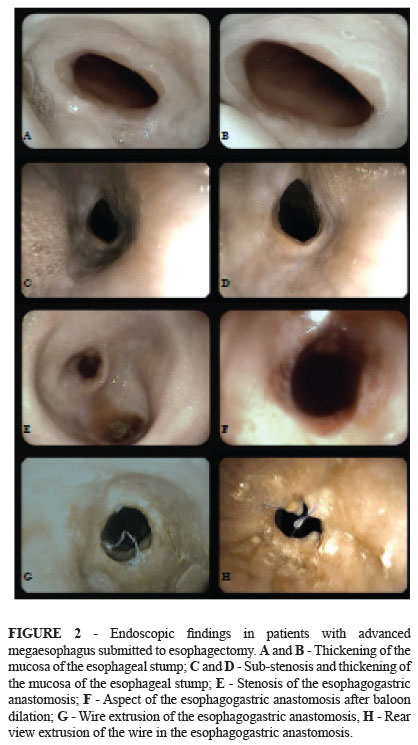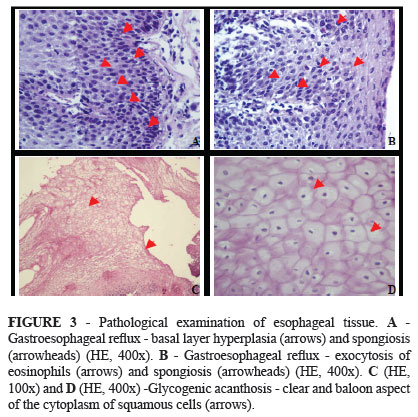PURPOSE: Evaluate anatomical and functional changes of the esophageal stump and gastric fundus of patients with advanced megaesophagus, submitted to laparoscopic subtotal esophagectomy. METHODS: Twenty patients with advanced megaesophagus, previously submitted to a videolaparoscopic subtotal esophagectomy , were evaluated. Were conducted: radiological evaluation of the stump esophagus with transposed stomach, electromanometric, endoscopic examination and histopathology of the esophageal stump and gastric fundus, without making gastric tube or pyloroplasty. RESULTS: It was observed that the average height and pressure of the anastomosis, in the electromanometric evaluation, were 23.45cm (±1.84cm) and 7.55mmHg (±5.65mmHg). In patients with megaesophagus III, the pressure of the anastomosis was 10.91mmHg (±6.33mmHg), and pressure from the UES, 31.89mmHg (±14.64mm Hg), were significantly higher than those in grade IV. The pathological evaluation detected mild esophagitis in 35% of patients, moderate in 20% and acanthosis glicogenica in 45%. The examination of the gastric fundus showed that 50% of patients were infected with Helicobacter pylori. Chronic gastritis occurred in 95% of the patients. CONCLUSIONS: The laparoscopic esophagectomy shown to be effective in the treatment of advanced achalasia. The cervical level anastomosis protects the esophageal stump from the aggression resulted from gastric reflux after the esophagectomy.
Laparoscopy; Esophagectomy; Esophageal Achalasia




